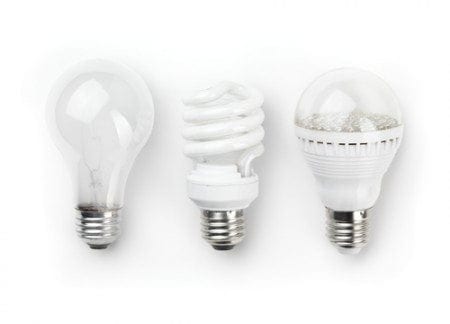SAD is correlated to a lack of exposure to sunlight. It is common during winter months, and is often called “the winter blues” in less severe cases. People who live in geographic regions without a lot of sunlight are also prone to develop SAD.
Given that symptoms of the disorder result from sunlight deprivation, many treatments for SAD include light therapy. There are various methods for conducting light therapy, but fighting off winter depression can be as easy as changes to a home’s lighting.
What SAD is
According to The Ohio State University Wexner Medical Center, SAD is a mood disorder characterized by depression that correlates to a certain time of year. In most cases, the related season is winter.
“However, SAD is often not described as a separate mood disorder but as a ‘specifier,’ referring to the seasonal pattern of major depressive episodes that can occur within major depression and manic depression,” the Wexner Medical Center stated.
Sunlight deprivation affects chemicals in the brain that are released to regulate positive emotions. Without enough light, those chemicals are not as active.
There are two types of SAD. Spring-onset SAD occurs in late spring/early summer, and fall-onset begins in late fall/early winter. Symptoms include irritability, fatigue, low concentration, low sex drive, more daytime drowsiness and increased sleep, trouble thinking clearly and an increase in appetite.
Onset is more common in adulthood, and women have more risk than men, as they are four times more likely to have the disorder.
It is fairly common in the U.S. and around the world. Nationally, anywhere between 10 and 20 percent of the population has the winter blues and 5 percent have a more serious case.
Various treatments options exist. Antidepressant medication and psychotherapy are available choices. Others are natural, such as exercise and light exposure.
Light therapy
Exposure to ambient light is often used as a treatment for SAD.
The goal of light therapy is to deliver light to the retina, which has cells that connect to the hypothalamus, according to Harvard Health Publications. It is the job of the hypothalamus to aid with regulation of the body’s circadian rhythm. Exciting activity in the hypothalamus restores balance to a person’s rhythms and corrects the effects of SAD.
During the winter months, there is a lot of overcast weather. Sometimes, the sun is not visible for days. Additionally, some people are located in places that do not receive a lot of sunlight during certain times in the year. Due to the planet’s rotation and axis, the sun takes a shorter trip across the sky and does not break the horizon.
Light therapy makes up for ultraviolet exposure deficiencies by delivering large amounts of illumination through a light box.
“These boxes provide 10,000 lux (“lux” is a measure of light intensity),” stated Michael Craig Miller, senior editor, Mental Health Publishing, Harvard Health Publications. “That’s about 100 times brighter than usual indoor lighting; a bright sunny day is 50,000 lux or more. You need to have your eyes open, but don’t look at the light. Many people use the time to read a newspaper, book, or magazine, or catch up on work.”
Even though light therapy is a leading treatment for SAD, it is not appropriate for everyone, as bright light can have adverse effects on some people. Researchers, however, are working on new methods such as the use of sunlight dimming and blue light to provide options for all patients.
Innovative light treatments
Given the prevalence of SAD, many people have found innovative ways to incorporate light therapy into various settings.
King 5 News reports that a bar in Portland, Ore., Lightbar, has incorporated the use of color-changing LEDs to provide light therapy to patrons while they sip a cocktail or a coffee. There is a wall of colored LEDs and visitors can check out different lights to see what works best for them. The owner, Alex Carson, responded to a demand for some kind of bright alternative to the low levels of sunlight during Portland’s winters.
In Norway, two designers, Lisa Pacini and Christine Istad, have created a sculpture called “Traveling Sun.” It is a disc with a 3 meter diameter and color-changing LEDs. The lights blend together to mimic the many hues of the sun and deliver mobile light therapy to Norwegian towns. It travels on a truck or boat, and at times it is even secured to the side of a building. The nation’s geographic location causes severe sunlight deficiencies during winter, but Pacini and Istad put their creative minds together to bring out the sun at any time.
According to Gizmodo, some hospitals have begun incorporating light therapy in their intensive care patients’ rooms. Lighting is installed to mimic daylight and display media. The result is less stress for patients in the ICU, which reduces the chance of a patient slipping into shock.
Choosing the best light
The short of all this information is that the best light for combating SAD is light that closely mirrors natural ambient light.
All light has a color temperature. Higher color temperatures have cool, white light that is closer to sunlight. Lower color temperatures have warmer, yellow light. People who are experiencing symptoms of the winter blues or SAD can lean more toward lighting with higher color temperatures if they are looking to get some light therapy at home without renting a light box.
Ceramic metal halide and LED lighting provide the most color temperature options among illumination sources.
As mentioned earlier, blue light is also seeing a lot of use for combating weather-related depression. According to The Huffington Post, the installation of blue light on train platforms in Japan was beneficial for lowering the number of suicides at train stations. During a period of overcast and stormy weather, rates had increased because of the absence of sunlight. Researchers who studied the trend suggested that exposure to blue or bright white light would aid in improving the mood of commuters.
CATEGORIES
Elder care solutions, Lighting technology



